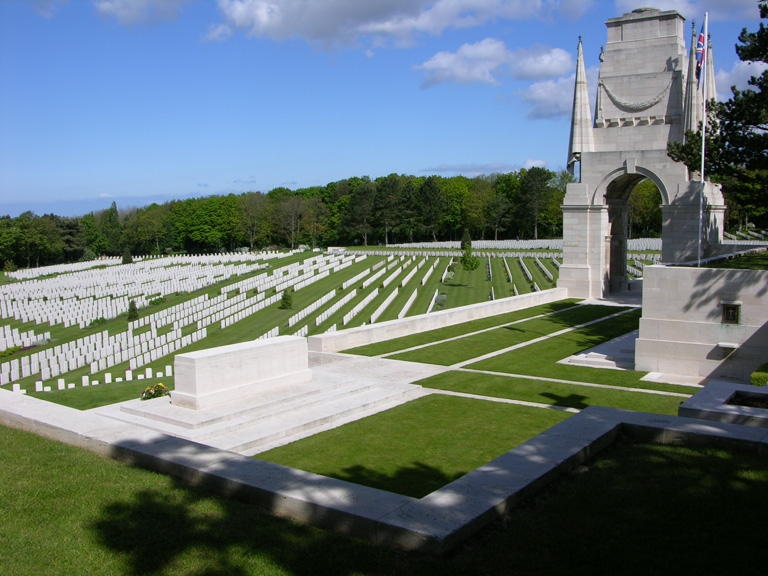The Commonwealth War Graves Commission is combining smartphone technology with traditional techniques to highlight the sacrifice and contribution made by women during the First World War.
More than 650 women who died during the war are commemorated by the CWGC worldwide.
The stories of two of them — nursing sister Dorothea Crewdson and YMCA volunteer Bertha ‘Betty’ Stevenson — are told on a new visitor information panel at Etaples Military Cemetery, the largest Commonwealth war cemetery in France.
The panel, the 100th installed by the Commission as part of a global programme, displays a QR (quick response) code which can be scanned with a smartphone to provide more information about the cemetery and the casualties buried or commemorated there.
 Etaples Military Cemetery
Etaples Military Cemetery
Dorothea Crewdson served as a Voluntary Aid Detachment nurse and was transferred to Etaples, on the coast of northern France, in 1915.
During the First World War, the area around the Channel fishing port was transformed into the largest British military base in the world, supplying the nearby Western Front. Commonwealth army training and reinforcement camps, as well as an extensive complex of hospitals, occupied the sandy plains, dunes and fields around the mouth of the River Canche.
In the summer of 1918, Etaples was attacked by German aircraft. Dorothea Crewdson was injured but she refused treatment so that she could continue to care for her patients, an action which earned her the Military Medal. She died in 1919 after contracting peritonitis.
In April 1917, Betty Stevenson was posted to Etaples as a YMCA driver, responsible for transporting relatives from England who were visiting the wounded in hospital. Betty was killed by an air raid in 1918 while assisting French refugees. She was given a military funeral and was posthumously awarded the Croix de Guerre avec Palme by the French General, Phillipe Pétain, for courage and devotion to duty.
Engaging interest
The new information panel at Etaples is among 500 with QR codes being installed across the world by the Commonwealth War Graves Commission, with the aim of providing more information to visitors during the Centenary and engaging the interest of new generations.
Claire Douglas, the Commission’s 1914-18 Production Coordinator, said: “The Commonwealth War Graves Commission believes this initiative will help bring home to all of us the great sacrifice made by servicemen and women in two world wars. It is a powerful way to combine traditional forms of remembrance, with new technology, to ensure we never forget.”
The QR code at Etaples also describes the links between the area and some of the most important literary figures of the First World War, among them the writer Vera Brittain. Like Dorothea Crewdson, she served at Etaples as a nurse, going on to recount her experiences of the war in her acclaimed memoir, Testament of Youth.
The war poets, Wilfred Owen and Siegfried Sassoon, both spent periods based at the camps in Etaples, making reference to them in their correspondence and work.
C.S. Lewis, author of The Chronicles of Narnia, was wounded at the Battle of Arras in April 1918 and treated in hospital at Etaples before returning to the UK.
Source: Commonwealth War Graves Commission
Date of press release publication: 28th November 2013
Images courtesy of Commonwealth War Graves Commission
Posted by: Peter Alhadeff, Centenary News
